






Joan Paulson reminiscences about her family’s involvement with the downtown Hutchinson restaurant
Brick Road to the Dassel History Center
Vigilante justice on the Minnesota prairie
Making o’ the green: St. Patrick’s Day treats
Time feels like it’s standing still during the long winter months. The lack of snow has limited outdoor activities, so it’s time to think about what can I do indoors?
As a lover of history, I’m always encouraging folks to visit a museum. Remarkably, we have four museums in the area. There’s the Dassel History Center and Ergot Museum in Dassel, the McLeod County History Museum in Hutchinson, the Meeker County Museum at the G.A.R. Hall in Litchfield and the Cokato Museum in Cokato.
Each month going forward, I will feature a local museum. This month, let’s visit the Dassel History Center and Ergot Museum, 901 Front St.
Check out the changing exhibit space on the fourth floor. It’s a salute to Dassel’s own — Hildred Olson. The exhibit tells the story of Olson’s journey from Dassel to Hollywood where she performed as a Munchkin in the Judy Garland movie, “The Wizard of Oz,” and home again. The exhibit includes a 13-minute video created by Paul Johnson.
And for those who like to know the rest of the story, there were 120 actors cast in the roles of Munchkins for the 1939 movie. Their Yellow

Brick Road took them to Oz in the form of the Hollywood Walk of Fame where they were honored with their star. Unfortunately, only nine survived with seven attending the ceremony Nov. 20, 2007. Among those who had died was Hildred Olson. In honor of her participation and in conjunction with the museum’s exhibit, a monument was unveiled June 17, 2023, at the Dassel Cemetery. It includes a star — thus, the name of the exhibit.
When you’re through visiting “Hildred Gets Her Star,” take time to view the other permanent exhibits: Ergot: From Blight to Blessing, Dassel Seed Corn, Peterson Pharmacy and Magnus Johnson. To experience a snippet of each exhibit, visit dassel. com/hs/page/ergot and click on any of the thumbnail images to view a slideshow.
And while you’re there, don’t miss the museum’s
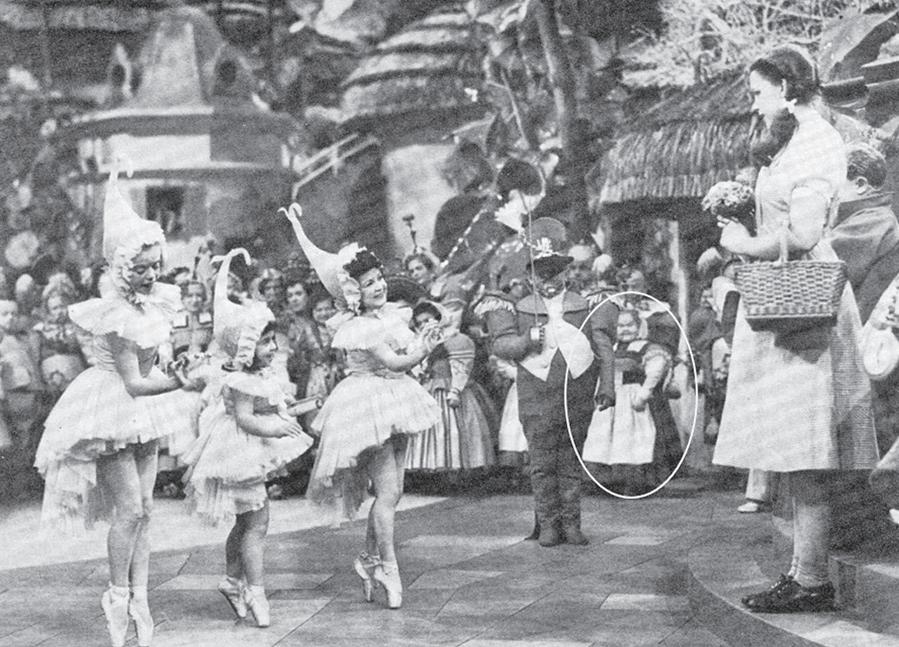
collection of public art. The fence murals can be seen outdoors along the west edge of the parking lot. The panels were created by 13 artists with ties to the Dassel area. They range in style and subject matter reflecting the viewpoint of the artist.
Dassel’s historical society is a relatively new addition to the community. Formed in 1987 with “$78 in the bank,” it proudly shares a membership roster of approximately 500 households and businesses, with 100 active volunteers.
The Dassel Area Historical Society’s home is the Universal Laboratory building, which was given to them in 1993. Thanks to grants from the Minnesota Legislature, Minnesota
What: Dassel History Center and Ergot Museum
Address: 901 First St., Dassel
Hours: 10 a.m.-4 p.m.
Tuesday through Friday and 9 a.m.-1 p.m. Saturday
Admission: Free.
Memberships are available
For more information: Call 320-275-3077 or visit dassel.com/hs
Historical Society, city of Dassel and donations, the building was renovated. A annex for offices, meeting rooms, storage, kitchen and lobby was added in 2008.

4 COVER STORY:
Joan Paulson reminiscences about her family’s involvement with J’s Pizza Garten in downtown Hutchinson
7 IN THE NEWS:
Former Sheriff Scott Rehmann publishes a true crime book about the 1896 murder of McLeod County Sheriff Joseph Rogers

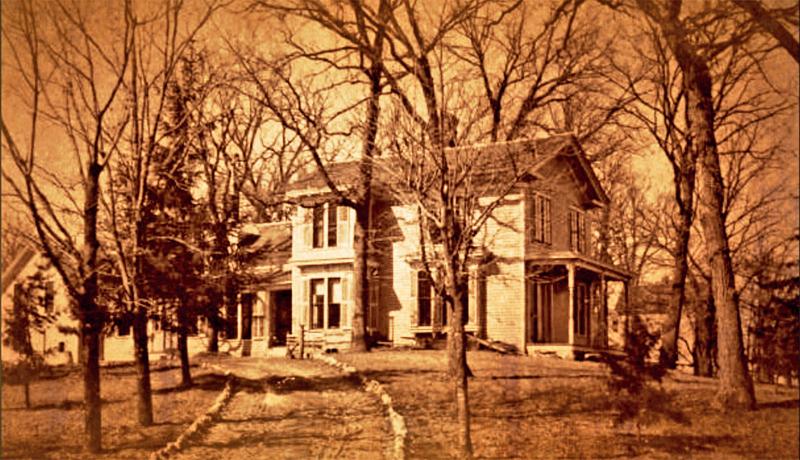
12
10 LOOKING BACK: Filmmaker Joseph Ullian is telling the stories of Hutchinson’s historic structures
13 MEDICARE : What are the Medicare costs for 2024?
14
March 2024
Vol. 16, No. 1
PUBLISHED BY Hutchinson Leader 170 Shady Ridge Road N.W., Suite 100 Hutchinson, MN 55350 320-753-3635
Litchfield Independent Review P.O. Box 307, Litchfield, MN 55355 320-693-3266
GENERAL MANAGER
Brent Schacherer: 320-753-3637 schacherer@hutchinsonleader.com
NEWS
Kay Johnson, features editor 320-753-3641
johnson@hutchinsonleader.com
ADVERTISING
Kevin True, advertising director 320-753-3648
true@hutchinsonleader.com
Sales representatives
Ronda Kurtzweg: 320-753-3652, kurtzweg@hutchinsonleader.com
Colleen Piechowski: 320-753-3652, piechowski@hutchinsonleader.com
Marcie Dean: 320-593-4804, mdean@independentreview.net
SUBSCRIPTION OR ADDRESS CHANGE
Toni Adams: 320-753-3657 circulation@crowrivermedia.com
PRINTED BY Crow River Press 170 Shady Ridge Road N.W. Hutchinson, MN 55350
Zest is a MediaNews Group publication. It is published monthly by the Hutchinson Leader and Litchfield Independent Review newspapers. No part of this publication may be reproduced, stored in a retrieval system or transmitted in any form by means electronic, mechanical, photocopying, recording or otherwise, without prior consent of the publisher.

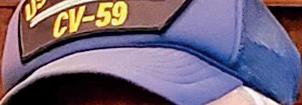




Fast forward to 2024. Bob and I having pizza at Main Street Sports Bar. My all-time favorite is hamburger and Canadian bacon and Bob’s is the Sam’s Special — sausage, pepperoni, green peppers, celery, onions and cheddar cheese.
SUBMITTED PHOTO

Before it was MSSB, it was a downtown eatery known as J’s Pizza Garten. Joan Paulson reminiscences about her family’s involvement with the restaurant
BY JOAN PAULSON Special to the LeaderDepending on your age, you may know Main Street Sports

Bar by its initials — MSSB — or the original version — J’s Pizza Garten that opened in the late 1960s. While the name has changed, the location — along North
Main Street — remains the same. The menu like the restaurant has kept pace with the times. Back in the day, a large pepperoni capri pizza went for $2.60 and an aged T-bone steak dinner served with salad, toast and tater tots weighed in at $2.75. Today, MSSB serves a large Krissy’s Special with pepperoni, green olives and onions for $22. While steaks are no longer available, you
can satisfy your beef craving with a French Dip or Philly sandwich.
— Kay Johnson—
My story starts when my family — the Gutormsons, there were 12 of us — moved to Hutchinson in 1967. We ranged in age from 6 to 19. Dad, also known as Bob, was a self-employed carpenter. Through word of mouth, he got the job to remodel J’s Pizza Garten.
Those of you who knew my dad know that when he went to work on his first day, he said to the owner, Harlan Johnson, “I have a bunch of girls at home, if you need any help.”
It didn’t take long before Leann, 19, and I were employed. We joined the other young kids working there. My sister, Lani, 19, lived and worked in the Twin Cities. She would come home on the weekends, so it wasn’t long before she worked with her sisters, as well.
Our pay was 85 cents per hour plus tips — usually 25 cents. Back then, a large pizza was $2.60. It’s a big difference from today when they run up to about $29. The funny thing was, back then I didn’t know what a pizza was. My mom made real meals for us each day and with 10 children, we never went to a restaurant to eat.
As waitresses we had to wear black skirts and white blouses. Harlan gave us a black apron to wear with a pocket for the order pad and pen.
In case you wondered, there are benefits to working at a pizza place when you are young. All of us — three sisters — met lots of kids our age, especially boys. We also each married a guy that we met while working at J’s. Leann married George Niebler in 1968. Lani married Gary Brown in 1969, and I married Bob Paulson in 1971. And just for the record, Leann and George and Bob and I have been married for more than 50 years. Lani and Gary had been married 37 years when he died in 2006.
I remember when these
crazy guys would come in on a Friday night and be silly. They’d bring their buddies and leave us tips under a tipped over glass or try to hide a pizza pan under their coat.
One very fond memory for us was working so late on Friday nights that the morning shift of bakers would be working at the Home Bakery — the aroma was wonderful. The owner would buy us a bunch of glazed doughnuts, still warm, to enjoy before going home. What a treat! We appreciated this tradition for many years.
Friday nights were very busy, especially when the State Theatre was playing a great movie such as “The Graduate,” “Easy Rider,” “To Sir With Love,” or “Valley of the Dolls.” A perfect date was a movie and pizza.
J’s Pizza Garten opened at 4 p.m. each day and closed at midnight. My dad worked on the remodeling during the morning hours. He moved his tools and table saw to the basement, so things were handy for him. He had to keep things clean and organized, so Harlan could open each day.
Saturday nights, Harlan would have his friends meet him around 10 p.m. in the backroom for “Poker Night.” We girls, would keep the place going for another two hours. Some of us made pizza. We each knew what had to be done. We knew one of us was to make sure the back room had what they wanted. Doing so, meant a good tip for us.
Elaine Soderberg and Sandy Lietz worked there longer than us, so they were


➤ continued from 5
in charge when Harlan was occupied playing cards.
By then we had another sister, Jackie, join us on weekends. It is so funny how different sisters can be. She didn’t take any guff from anyone. Back then in the late 1960s and early ’70s, J’s was a date night or drinking buddy eating establishment. It really wasn’t a family place yet. So on weekends, we, girls, heard a lot of silly talk such as “Hey cutie,” “Wait on me, I’ll leave you a big tip” and so on. This was back in the day before the #MeToo movement.
Harlan had trained us to tolerate the chatter unless it really bothered us, then he would step in. But no one was to touch us. If they did, they would get kicked out in a hurry.
Jackie, 16 years old, would tolerate just so much. Then she would tell the guy to shut up if he didn’t want a lap of hot coffee. She didn’t care if he left a tip or not. Leann and I were more shy and just let them talk. Lani was a strong young woman and put many guy customers in their place with her comeback lines.
Brother Tom and sister Terri started working weekends, too, then we older girls only worked “when needed.”
A pizza restaurant was a new attraction for Hutchinson in the early 1970s. So it really was a main weekend activity for many years. At this point a lot of people thought the Pizza Garten was owned by the Gutormson family. We had six kids working and our dad remodeling it by then.

Back in the day, you could order a Kris’ Special with sausage, pepperoni, olives, mushrooms and onions for $9.85. Maybe you’d rather order a two pork chop dinner with a salad, toast and choice of potato — tator tots or French fries — for the grand sum of $4.25. The most exotic item on the menu was a french-fried gulf shrimp dinner for $6.25.

the best part? They offered spumoni ice cream.
My brother Tom was a short-order cook and Terri washed dishes. Brother Greg started then as well. I am not sure what his job or title was except for “entertainment.” He kept everyone laughing and in good spirits.
With young high school athletes working there, more guys came to dine at J’s Pizza as well. Tom was in wrestling and Greg was on the baseball and football teams. With time, Terri moved up to waitressing and sister Renae became the dishwasher.
After awhile, we girls moved on. Lani started a job at Erickson Gas Station. Leann became a mommy and I got a full-time job across the street from J’s at Tiny Tiger, Hutchinson’s first discount store.
I often walked down a few buildings to Janousek’s Cafe for lunch. I learned to shake dice and to love hamburgers and fries.
Many years later, sister Renee returned to Main Street as part of the management team. She hired brother Tom’s son, Chris, to deliver orders.
Harlan sold his recipes and business to John and Maureen Bytart. Then it became a family restaurant — a favorite meal destination. There was no more poker in the backroom. They added placemats for kids to color on, and high chairs. Pizza
was becoming a much-indemand food choice.
J’s offered many great options including the Garten Burger. Their spaghetti and meatballs were wonderful, as was their French bread and meat sauce with or without meat balls. So, good! And
It wasn’t that long ago that brother Tom was home from Colorado and sister Leann and husband George were home from Texas. A total of 21 of us Gutormsons went to Main Street Sports Bar to enjoy their pizza and burgers. We talked about the good old days at J’s — what had changed and what stayed the same.
We give MSSB gift cards to each other. Besides great food, we all have fond memories of that place. Our family has enjoyed J’s Pizza Garten and Main Street for more than 50 years.
Former Sheriff Scott Rehmann publishes a true crime book about the 1896 murder of McLeod County Sheriff Joseph Rogers
BY BRENT SCHACHERER schacherer@hutchinsonleader.comBy his own admission, Scott Rehmann wasn’t much of a student in high school.
But he learned how to research — investigate — things pretty well during a law enforcement career that eventually took him to the job of McLeod County sheriff.
Now retired from law enforcement and living in Litchfield, Rehmann used his fact-finding skills to help him complete and publish a book telling the sensational, true story of vigilante justice on the Minnesota prairie. The story — and Rehmann’s telling of it — have equally surprising twists.
“This whole thing has been a huge learning curve,”
Title: “The Midnight Gavel of Judge Lynch”
Author: Scott Rehmann
Published: May 9, 2023
To buy: Visit amazon. com. It is available in three forms: ebook, paperback and hardcover



To borrow: Call the Hutchinson Public Library at 320-587-2368
Rehmann said of the process of getting the book published. “It has been difficult, and interesting.”
“The Midnight Gavel of Judge Lynch” recounts the deadly encounter between the McLeod County sheriff and two men traveling through the area on their way to Iowa. With the sheriff, Joseph Rogers, dead, the men try to flee but are pursued by posses and eventually brought back to face trial. But when a trial does not deliver the verdict a riled public seeks, a lynch mob takes matters into their own hands.
Told through the lens of newspaper reports from the 1890s that Rehmann collected over a period of more than a decade, the story reads like a movie script.
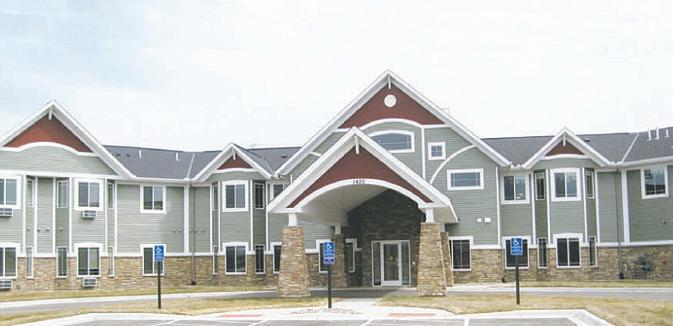
• AssistedLiving&MemoryCare.
• 1&2BedroomApartmentsOfferedwithWasher,Dryer andFullBathrooms.
• IndividualizedCare/ServicesProvidedfor ChangingNeeds.
• ActivitiesOffered:DailyExercise,WeeklyShopping TriptoCoborns,SocialEvents,Bingo,Cards& MUCHMORE!
• PavedWalkingPathsaroundFacility,Outdoor Garden&SittingAreas.
• CommunityBusprovidestransportationforresidents toGrandMeadowssponsoredevents(restaurants, shows,shopping,etc.).

➤ continued from 7
“That’s the way my mind worked,” Rehmann said of his reaction when first coming across the story. “It was just all this movie played out in my head.
“I’m a visual person,” Rehmann added. “I’m reading this, like, whoa! Just a lot of different things happening, a lot of twists and turns … then the street justice, mob justice.”
Rehmann was McLeod County sheriff when he suffered a stroke Aug. 31, 2020, leaving him paralyzed on his right side. He spent three weeks in the hospital and continues to undergo physical therapy. While strength and feeling have returned to his right side, he is not fully recovered.

“It’s not 100 percent,” said Rehmann, who now works at Wings treatment center in Litchfield. “There’s still a lot of weird little neurological things. It’s just enough to be annoying, but not enough that I can’t do things. Like my fine motor skills … it’s hard to do some things (and) I wasn’t really good with numbers in the first place, and that



really kind of made it more difficult.”
He spent 14 years as sheriff in McLeod County after having been a part-time deputy and working full-time for the Glencoe Police Department as a school resource officer and patrolman.
It was early on in his term as sheriff that Rehmann’s book began to take shape, mostly as an offshoot of another idea he had.
“I wanted to do a citizens academy, so I wanted to get some interesting stories that I could kind of share throughout the academy,” he said. “I went to the historical center in Hutchinson and started looking at past murders, because those seem to always be the most interesting things to people.”
One story intrigued him more than many others he found during his research
— the killing of one of the McLeod County’s earliest sheriffs, and the public outrage that led to the lynching of the two men suspected of the killing.
“I had heard about the lynching and the murder of the sheriff, so I started asking questions about information for that story,” Rehmann said. “People got excited, the workers and volunteers (at the McLeod County History Museum), and they started giving me pictures and showed me where to get news articles. All of a sudden, this little thing I heard about really just kind of blew up.
“I found a lot of different murders that happened in McLeod County, but this one was one that, because it was a former sheriff and I was someone that was kind of in the lineage, that’s what made it more fascinating,” he added.



Rehmann didn’t need to think about the story very long before deciding it would be a good book. But he didn’t want to rush it and sacrifice details. So he put his investigative skills — honed throughout his law enforcement career — to use.
It took the better part of 16 years to compile all of the information into book form, but Rehmann believes it was worth it. And of course, he wasn’t only working on the book for the past 16 years. He was working his law enforcement career and then recovering from the stroke.
“Once I started getting the articles ... it just kind of wrote itself,” he said. “Just the way they wrote way back then, a lot of detail, just really big stories. And it really made it across the nation. I was finding stories from New York, stories from Sacramento (California) … just across the nation. It really was a big event.”
Though newspapers provided the bulk of the details, Rehmann wasn’t satisfied with only that. He contacted other sources, including genealogy experts and authors of other Minnesota history books. He tried to track down rumors and family stories
handed down through the years about events surrounding the lynching.
“People held on to these stories that have been passed down, and they believe them,” Rehmann said. “It turns out they either weren’t true, or maybe true, but I have no way to prove it.”
Sometimes, the more he researched, the more different branches he found to the story. It was difficult separating fact from fiction in some cases, but he enjoyed tracking down those leads, no matter where they led.
“I love the investigative, detective work in it,” Rehmann said. “You have to search different people’s names and birth dates and where they may have been buried and … I would even call the archives at different colleges where some of the attorneys or judges had graduated to find a picture of them as a student back then.
“I loved that part, just piecing it all together,” he added.
—
Editor’s note: In an interesting twist, Sheriff Joseph Rogers was Augusta Wiebke Rathjen Rogers’ brother — my great-great-grandmother, which made Sheriff Rogers my great-great-great uncle.
— Kay Johnson
The vagrants who killed McLeod County Sheriff Joseph Rogers were hanged by the neck until dead at the bridge over the Buffalo River, south of Glencoe. The vigilantes who hanged the men were never identified.











Historic Hutchinson is getting the word out about its mission through documentary fi lms. The man behind the camera and directing the stories is Joseph Ullian, better known as Jos.

If you’re a follower of social media or local history, you’re probably aware of Historic Hutchinson, the local preservation group. It’s known for a variety of accomplishments ranging from the preservation of the Harrington-Merrill House and the Main Street clock to the historic Episcopal Church and Great Northern Depot.
One way the nonprofit is
getting the word out about its mission is through documentary films. The man behind the camera and directing the stories is Joseph Ullian.
The Hutchinson transplant taught in the communications department at Southern Connecticut State University for 33 years, attaining the rank of tenured full professor, and retiring as professor emeritus.
“At SCSU, I taught organizational communication and video production,” Ullian said. “At one time, I had over 100 students who graduated and got jobs at ESPN, including a multiEmmy award winner. One of my former students is the head of original programming for the Hallmark Channel. Many others are working in the field.”

At the same time that he was teaching at Southern Connecticut State University, he also was a co-partner in a company called SEA-TV.
“We specialized in videos on nautical topics,” he said. “We did productions all up and down the East Coast and the Caribbean.”
As much as he may have been looking forward to retirement from his academic career, it only lasted 12 days. Things changed when Ullian received a call for a job as a full-time faculty member at Southwest Minnesota State University in Marshall. After seven years, he retired again, but continues to teach an occasional class as an adjunct professor.
Ullian shares his thoughts about storytelling in this Leader Q&A:
Where are you from?
I grew up by the ocean on Long Island, New York, but I have lived in Massachusetts, Philadelphia, rural downstate Illinois, Connecticut, and now Minnesota.
Why did you become a filmmaker?
I grew up in a family of storytellers using various media. My brother was a short story writer and my sister is a visual artist. In college, I took many photography courses and found that I loved that visual medium. Then in graduate school at the University of Illinois, I took a job in Instructional Television, and worked on over 300 video productions. During that time, I came to see video as an engaging way to tell and preserve stories.

How did you come to retire in Hutchinson?
I met my wife, Maureen, at a wedding in Connecticut. During the reception, she developed an upset stomach. Someone told her that I had some charcoal pills. I gave her some, we talked, decided to keep in touch, and the rest is history. She grew up in Hutchinson, and was living in Gaylord at the time. After we met, she came out to be with me in Connecticut until I retired from Southern Connecticut State University. We lived in the charmingly New England town of Guilford, Connecticut, for 12 years. Then after I retired the first time, we decided to move out to Hutchinson to be closer to family.
How did you get hooked up with Historic Hutchinson?
I was looking to produce a documentary for Pioneer PBS, and I stumbled across an article about the ongoing work to preserve the Harrington-Merrill House. In doing research for this project, I met with various people involved in Historic Hutchinson, and somehow I found myself a member of that organization.
Why is storytelling important?
My academic background is in cultural communication. According to this approach, who we are, what we believe, and how we understand our existence comes from our interpretation of our experiences and the symbolic messages we encounter. Stories are but one of these symbolic messages. Others are sermons, newspaper articles, television shows, films, books, jokes, social media posts, gossip, and many others. One kind of symbolic message is architecture. Buildings tell a

“Buildings tell a story,” Jos Ullian said. “So, for instance, the Harrington-Merrill House tells a strong message. It has withstood Indian attacks, pestilence, fi re, and attempts at demolition. It stands as an enduring monument, a story so to speak, about the resilience and fortitude of the people who founded this city.” Ullian’s documentary, “The Conscience of Hutchinson: The Harrington-Merrill House,” is available for viewing at youtu.be/dnFa5WLAvUk.
story. So, for instance, the Harrington-Merrill House tells a strong message. It has withstood Indian attacks, pestilence, fire, and attempts at demolition. It stands as an enduring monument, a story so to speak, about the resilience and fortitude of the people who founded this city. My goal in documenting historic structures in Hutchinson is to help spread and preserve the stories that these buildings tell. We come to know ourselves as members of this community partly through these buildings. Being attuned to their stories can help guide us in the future.
What other filmmakers have inspired your work?
Ken Burns, his deep research, his techniques, and
his storytelling genius has inspired my work.
What has been your favorite film you’ve worked on and why?
My films are like my children. I love each of them for different reasons.
Anything else you’d like to share?
One venture I want to pursue is to create a partnership, a collaboration, with a number of media stakeholders in Hutchinson to bring local broadcast television to the city. Currently, we get our local news from television stations in the Twin Cities. Occasionally they will do a story in our area, but not on a regular basis. Through the use of citizen video journalists, we could
set up an organization that could be the source of local news and stories. As a start, I would like to hear from people in Hutchinson who would like to learn how to create documentaries. These days, making documentaries is not a matter of expensive equipment. Smartphones, some inexpensive equipment, some basic techniques, and some understanding of how stories are made are really all one needs to get started. Anyone interested can email me at ullianj1@southernct.ed and learn by working with me on future productions.
For more information about Historic Hutchinson, visit www.facebook.com/ HistoricHutchinson/ or historichutchinson.org.
t some point, you’ll want to share your estate plans with your loved ones — and the first step in this process may be to hold a family meeting.
The best time to hold this meeting is when you’re still in good mental and physical shape, and the enactment of your estate plans may well be years away. But what topics should you cover?
Consider these main areas:
Your wishes — and those of your family: Use this meeting to introduce
your estate plans and, in a basic sense, what you hope to accomplish with them — leave money to your family, support charitable groups and so on.
Estate planning documents: At the time of your family meeting, you may or may not have already created your estate planning documents, but in either case, this would be a good time to discuss them. These documents may include a will, a living trust, financial power of attorney, health care power of attorney and possibly other arrangements. At a minimum, you’d like to give a general overview of what these documents mean, but at an initial family
meeting, you don’t necessarily have to get too detailed.
Roles of everyone involved: Not only does a comprehensive estate plan involve moving parts, such as the necessary documents, but it also includes actual human beings who may need to take on different roles. You will need an executor for your will and, if you have a living trust, you’ll need a trustee. Even if you choose to serve as the initial trustee, you’ll still need to identify one or more successor trustees to take your place if you become incapacitated, or upon your death. Plus, you’ll need to name people to act as your power of attorney
atthetopofyour list?
Theremaybeopportunitiesforyour investmentstobeworkingharder foryou.Let’sworktogethertomake sureyourfinancialstrategyis optimized.Contactustodayfora complimentaryreview.
for health care and finances.
Here’s one more suggestion: Let your family know that this initial meeting doesn’t mean the end of communications about your estate plans. Encourage your loved ones to contact you with questions whenever they want. You may need to hold additional family meetings in the future, but by laying the initial groundwork, you will have taken a big first step in establishing the legacy you’d like to leave.
— This article was written by Edward Jones for use by your local Edward Jones Financial Advisor. Edward Jones, Member SIPC



Dear Marci, I heard there are a few changes to Medicare costs this year. What should I expect?
— Marco
—
Dear Marco,
Yes, that’s right! Here’s a breakdown of the costs you can expect in 2024:
Part A
(Hospital Insurance)
Premium:
Free if you’ve worked 10 years or more
$278 per month if you’ve worked 7.5 to 10 years
$505 per month if you’ve worked fewer than 7.5 years
Deductible:
$1,632 each benefit period
Coinsurance:
$0 for the first 60 days of inpatient care each benefit period
$408 per day for days 6190 each benefit period
$816 per lifetime reserve day after day 90 in a benefit period (You have 60 lifetime reserve days that can only be used once. They’re not renewable.)
Skilled Nursing Facility:
$0 for the first 20 days of inpatient care each benefit period $204 per day for days 21-100 each benefit period
—
Part B
(Medical Insurance)
Premium: $174.70 is the standard premium
Deductible: $240 per year
Coinsurance: 20% for most services Part B covers
—
Part D (Prescription Drug Insurance)
National Average Part D Premium: $32.74/month
Maximum Deductible: $545 per year
Coverage Gap Begins: $5,030 (you and your plan together)
Catastrophic Coverage Begins: $8,000 (your costs, including brand coverage gap discounts)
Costs after catastrophic limit: $0
For more details, check out our Guide to Medicare Costs in 2024 here: Medicare Costs in 2024.
You can also review your Medicare & You 2024 handbook, call 1-800-MEDICARE (633-4227) to receive one if you have Original Medicare. If you have a Medicare Advantage Plan, contact your plan directly to learn about changes in 2024 that might affect you.
I hope this helps!
— Marci
A blood transfusion is needed every 2 seconds in the United States. However, only 3% of the population

donates blood each year! America’s Blood Centers provides some useful tips for those who’d like to help ensure that there is enough diverse blood to meet the demands of the country by donating blood:
Be over the age of 16, in good health, and at least 110 pounds
Get a good night’s sleep
Eat a well-balanced meal beforehand and hydrate well
Bring a government ID
Set aside 1.5 to 2 hours to make your donation
Know that you can donate blood every 56 days
Where can I give blood?
Noon-6 p.m. Tuesday, March 12: Peace Lutheran Church, 400 Franklin St. SW, Hutchinson; 320-587-3031
10 a.m.-4 p.m. Wednesday, April 2: Darwin City & Township Hall, 305 E. Curran St., Darwin; 320-693-2928
Noon-6 p.m. Tuesday, April 9: Peace Lutheran Church, 400 Franklin St. SW, Hutchinson; 320-587-3031
8 a.m.-2 p.m. Tuesday, June 11: Christian Church of Litchfield, 212 N. Marshall Ave.; 320-593-3635
For more information, visit www.redcrossblood.org or call 800-733-2767.
—
Dear Marci is a column provided by the Medicare Rights Center, a national, nonprofit consumer service organization that works to ensure access to affordable health care for older adults and people with disabilities through counseling and advocacy, educational programs and public policy initiatives.
St. Patrick’s Day is a fun day we celebrate before the nicer days of spring arrive. It started out as a religious holiday, and over time it has become a celebration for the Irish culture. We associate green color with the day — green shamrock symbols, green beverages and green food. One legend claims that wearing green makes you invisible to the mischievous leprechauns.
Serving green treats and meals on St Patrick’s Day is traditional. Enjoy!
—
Make a homemade green Shamrock shake. Its sweet, slightly minty flavor is a perfect treat made with simple in-

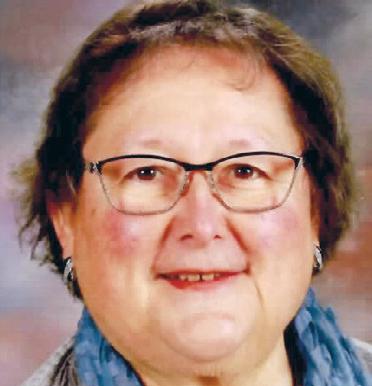
gredients; not a lot of additives and high fructose corn syrup. Top the shake with whipped cream and green sprinkles.
Ingedients:
2 scoops vanilla ice cream

1 cup milk
1/4 cup heavy whipping cream
1 teaspoon mint extract (not peppermint)
7-8 drops green food coloring
Extra whipped cream for garnish
Green sprinkles for garnish
Instructions:
Inside a blender, add vanilla ice cream, milk, 1/4 cup heavy whipping cream, mint extract and green food coloring. Mix until well blended. Add more milk if necessary. Pour into a serving glass and garnish with prepared whipping cream and green sprinkles. 1 serving.
Popcorn is a fun snack and this simple recipe is fun to make for St. Patrick’s Day. It’s really green candied caramel popcorn.
Ingredients:
4 quarts popped popcorn
1 cup sugar
1/2 cup packed brown sugar
1/2 cup water
1/3 cup light corn syrup
1 teaspoon white vinegar
1/2 cup butter
8-10 drops of green food coloring
Instructions:
Place popped popcorn in a large roasting pan to keep




warm in a 250-degree oven. Combine in a heavy saucepan the sugars, water, corn syrup and vinegar. Cook and stir over medium heat until mixture comes to a boil. Cook, stirring occasionally, until a candy thermometer reaches 250 degrees (hard ball stage). Remove from heat and stir in butter until melted. Stir in food coloring, slowly increasing amount until desired color. Drizzle over warm popcorn and toss to coat. Cool. Break into pieces and store in airtight container. 20-24 servings.
➤ continued from 2
The Dassel History Center also serves as the home of the FungusAmongus Players of Dassel-Cokato. The
If you like classic Reuben sandwiches, you can make this quick, easy appetizer recipe. The recipe works better if you use the larger crescent rolls to hold all the filling. Drain the sauerkraut and squeeze out the liquid. Make sure you press the dough seams together otherwise the cheese will leak out. You can substitute pastrami or turkey pastrami for the corned beef.
—
Ingredients:
local theater troupe is performing Arthur Miller’s “The Crucible” 7 p.m.
Friday and Saturday, March 15-16 and March 22-23, and 2 p.m. Sunday, March 17, 24. Tickets are available by calling the museum at 320-275-

8-ounce package refrigerated crescent dinner rolls
1 cup sauerkraut, rinsed and well drained and chopped
1 tablespoon Thousand Island dressing
4 slices processed Swiss cheese, cut into 1/2-inch strips
8 slices deli corned beef (thin slices)
Instructions:
Separate crescent dough unto eight triangles. Combine sauerkraut and salad dressing. Place two cheese strips across the short side
3077 or online at www. fungusamongusplayers.org.
Also coming up is “Unsinkable Women” 7 p.m. Friday, April 19. Sponsored by the Dassel-Cokato Arts Association, Deborah Jean Templin, a Glencoe native and New York actress,
of each triangle. Fold corned beef slices in half; place over cheese. Top with sauerkraut mixture. Roll up each from the short side and place on ungreased baking sheet. Bake 375 degrees for 10 to 15 minutes or until golden brown. 8 servings.
— Bev Barrett is a retired family and consumer science teacher who lives in Litchfield and operates the 4B’z Event Center in Litchfield. Her Baking with Bev column appears in the Independent Review every other week.
will perform the program, which centers around stories and songs from the Titanic. The RMS Titanic was the largest ship afloat at the time. It sank after hitting an iceberg during its maiden voyage April 15, 1912.



Whenit’stimeforretirement,whymowthelawnorshovelsnow?Stayactive andliveavibrantlifewithoutallthehassle;enjoyactivities,entertainment, andsocialopportunities.WoodstoneActiveLivingismorethanjustsenior apartments.Designedforseniors55+thatwantfewerresponsibilitiesand moreadventure,WoodstoneActiveLivingoffersabuilt-incommunityof friendsandactivitiesandamenitiesbeyondtraditionalseniorlivingoptions





•1&2 bedroomapartments
•InApartmentLaundry
•Movietheaterandotherentertainment
•Pub/gamearea/outdoorsocializing
•HealthandWellnessCenterandoutdooractivities
•Diningroom(ContinentalBreakfastincluded)
•Scheduledactivitiessuchasbustours,group kayaking,groupbikingonthetrailsystem,golf, aquaticcenteroutings,crafts,andmore VisitsportingeventsintheTwinCitieswithoutthe hassleofdrivingandparking



